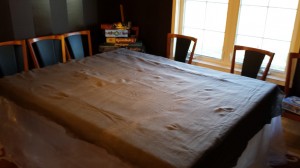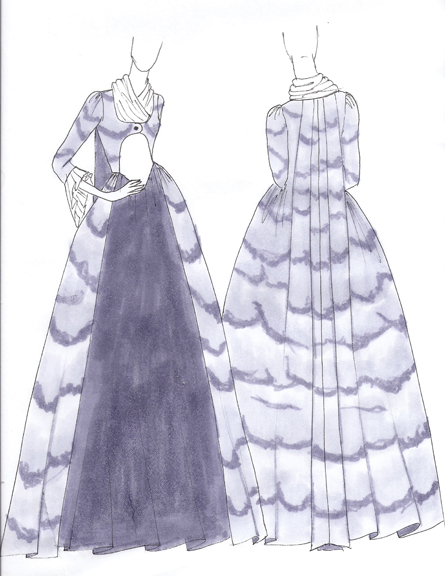(Pictures and video will be posted as soon as I get back to Milwaukee, because my stupid phone died.)
Well, that unexepectedly took 12 hours to upload. Sheesh!
1) Describe the operation of your final project. What does it do and how does it work?
As planned, the dress imitates a lightning storm – successfully! Each “cloud” consists of 15 extra bright white LEDs, connected to a single pin on the Arduino. My code is designed to trigger a random number (up to 3 or it blows a circuit, lol) of random pins and then execute the stutter step lightning effect. The brightness and duration of the lightning flicker is also randomized. A flex sensor added under the arm shortens the delay between lightning strikes, giving the effect of increased storm activity when the wearer makes a dramatic gesture.
2) Overall, what are your feelings about your project? Are you happy, content, frustrated, etc.?
Overall, I am extremely happy the the effect. The piece looks almost exactly as a planned and the lightning effect functions perfectly. My one disappointment is that due to losing so much time to technical difficulties, I wasn’t able to sew in as many LEDs as I would like. The gown in it’s current state is much more underwhelming than I intended. Fortunately, this is easily fixed by sewing in the remaining 300 LEDs.
3) What were the largest hurdles you encountered in your project and how did you overcome these obstacles?
Time, time, time. Dying wool takes a lot of time. Making felt takes a LOT of time. Sewing in LEDs takes a lot of time. And all of this was compounded by the last minute failure of my protoboard chips. If I hadn’t lost 7+ hours to trying to troubleshoot that single issue, my final product would have been in a much better state.
4) How well did your project meet your original project description and goals?
As I said above, I am extremely pleased, especially with the program functions. It works exactly as I had hoped and the effect is perfect.
5) If you had more time, what would you do next on your project?
Sew in 300 more LEDs! I’ll be doing this over Christmas, for sure.

















